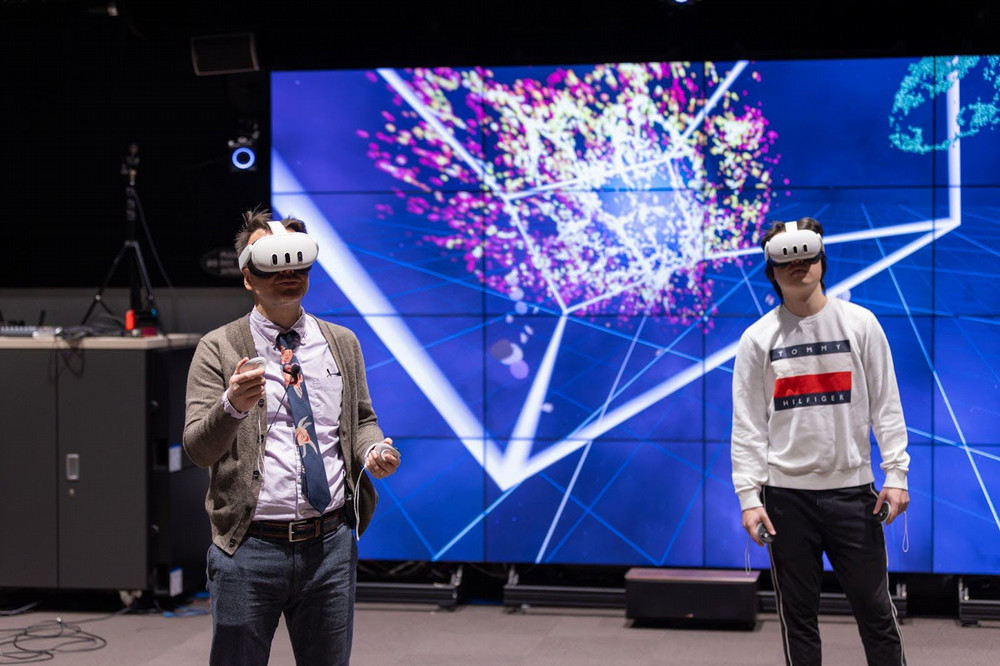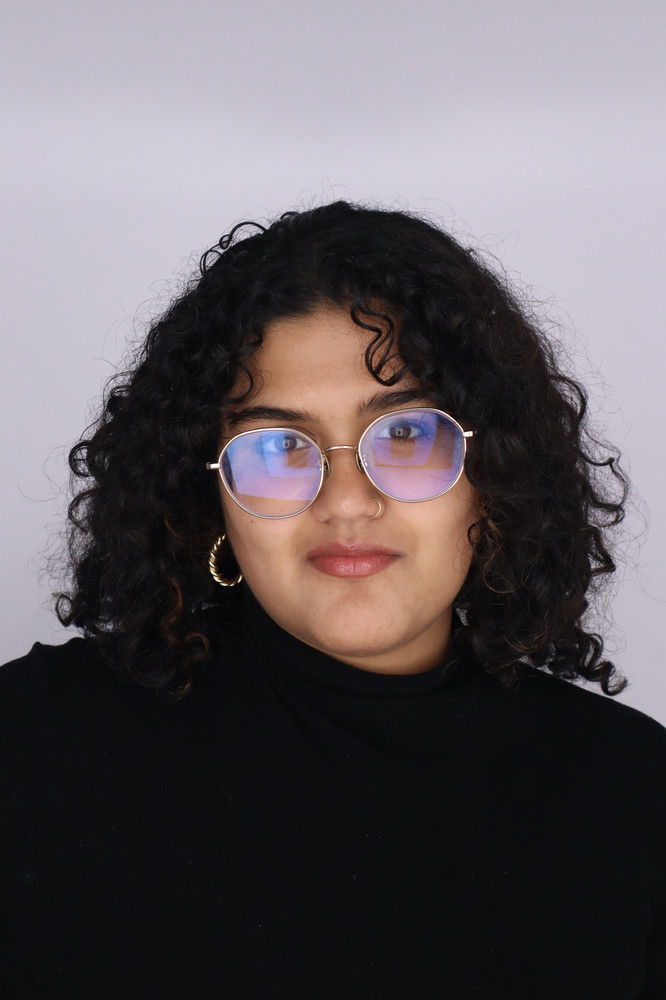Virtual reality meets academia: How Collab XR is taking students to space and beyond
Since 2004, the Envision Center has been pioneering the field of virtual reality at Purdue University. Now, two decades later, the center has launched its new learning platform “Collab XR” to offer collaborative, immersive learning experiences.

Before Collab XR, Danny Milisavljevic, associate professor of physics and astronomy, had to painstakingly use 2D diagrams to describe complex 3D astronomical data.
Milisavljevic could create animations to offer some perspective on complex 3D data, but the experience was limited because he controlled the viewing angles. This meant that he, as the creator, gained the most information from the animations, whereas students struggled to fully grasp the spatial properties.
He imagined an astronomy class where, instead of just looking at models of dying stars, students were transported to space and could look and interact with these phenomena up close. Inspired by his vision Purdue’s Envision Center created its new learning platform “Collab XR.”
Collab XR (extended reality), is designed to leverage all of the Meta Quest 3 headset’s newest features. The platform creates a shared virtual space where users wearing headsets can interact with the same content simultaneously.
This can be experienced in two ways: 1) fully immersive virtual reality, where the entire view is digital, and participants appear as avatars, or 2) passthrough augmented reality, which uses the headset's cameras to display the real world while overlaying virtual elements, making them appear as part of the physical space.
George Takahashi, lead visualization scientist at the Envision Center, said that prior to virtual reality, communicating complex 3D information was largely limited to physical models.
“Virtual Reality opened the door to bring people together virtually to observe physics-defying large models,” Takahashi explains. “By moving to mixed reality and generalizing the models to accommodate data from any domain, this platform brings people together physically and is more scalable and accessible than ever before.”
Danny Milisavljevic, associate professor of physics and astronomy, uses the new technology in his classroom to help his students understand complex 3D astronomical data.
“The response from students has been incredible,” says Milisavljevic. “The excitement and reward of the experience is heightened by exploring content collaboratively, and they report far better comprehension of the multidimensional data as compared to traditional screen or blackboard presentations.”
The platform's versatility goes beyond astrophysics. Robin Tanamachi from Purdue’s Department of Earth, Atmospheric, and Planetary Science uses the Collab XR platform in her smaller classes to allow her students to interact with radar observations of storm clouds.
“Much of what goes on inside severe thunderstorms is dynamic, three-dimensional, and invisible to the naked eye,” Tanamachi says. “Weather radar gives us the ability to probe the interior structure of the storm using a microwave beam. But, looking at those data on a flat screen and trying to reconstruct the full three-dimensional structure of the storm is cognitively challenging.”
She says the addition of Collab XR has been revolutionary to her classroom, allowing her students a more in-depth insight into meteorological phenomena while allowing the students to better understand its spatial geometry.
“I’ve been able to let the students interact with the data in a way that isn’t possible on a screen,” she explains. “For example, they can rotate the data, walk through it, look at it from different angles, and enlarge features of interest. Most importantly, they can switch between different radar variables and see the spatial relationships between features.”
Takahashi envisions a future where more fields and disciplines embrace Collab XR, unlocking advanced visualization capabilities in their classrooms. With a clear vision and the necessary data, instructors can quickly integrate this powerful platform. The Envision Center is ready to bring their ideas to life and get them up and running in no time.
Preview what the Collab XR platform can do in your classroom: https://www.rcac.purdue.edu/envision/xr-lab

Malini Nair
Communication Assistant for Teaching & Learning, tlcoms@purdue.edu
